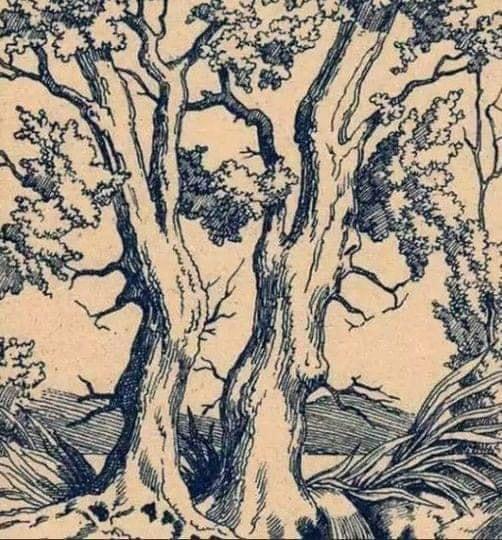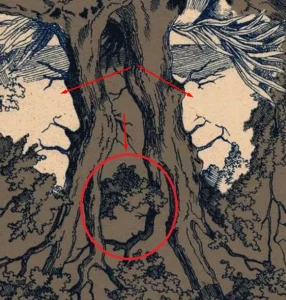Majestic Oaks: Exploring the Ecology, Symbolism, and Art of Twin Trees
Embracing the Grandeur of Twin Oak Trees
There’s something undeniably stirring about two mighty oaks standing side by side—gnarled trunks twisting skyward, canopies interlocking like ancient guardians of the forest. Whether you encounter this scene in a sepia-toned etching, a hiking trail, or your own backyard, twin oaks capture our imagination. In this article, we’ll dive into the world of oak ecology, uncover the deep-rooted symbolism of paired trees, and even share tips for sketching or photographing these natural monuments. By the end, you’ll see why oaks have long inspired poets, painters, and naturalists alike.

The Life Cycle of Oaks: From Acorn to Ancient Sentinel
Before these twin giants reach maturity, each began as a humble acorn—a seed packed with potential. Consider these key stages:
- Germination: Planted by a passing squirrel or nestled in leaf litter, an acorn cracks open as spring moisture triggers growth.
- Sapling Phase: For the first decade, the young oak focuses on root development and establishing a sturdy trunk. Hidden below the soil, roots spread wider than branches, anchoring the tree through storms and droughts.
- Maturity: Between 50 and 100 years, oaks enter their prime—towering 60 to 100 feet tall and boasting expansive crowns. Their bark thickens into rugged plates, offering protection from fire and pests.
- Ancient Majesty: Some oaks surpass 500 years, witness to countless seasons. Their hollow trunks and twisted limbs become habitats for owls, bats, and woodpeckers.
By understanding this timeline, we appreciate that every leaf and branch in our twin-oak sketch represents centuries of slow, deliberate growth.
Oak Ecology: Keystone Species in Forest Communities
Oaks do more than stand proudly—they nourish entire ecosystems:
- Wildlife Magnet: Acorns feed deer, squirrels, turkeys, and boar. Cavities in mature trunks house nesting birds, bats, and small mammals.
- Understory Allies: Oaks’ dappled shade fosters wildflower carpets of trilliums, violets, and spring ephemeral bulbs. Their leaf litter enriches soil microbes and fungi, fueling forest health.
- Carbon Capturers: With massive canopies and dense wood, oaks sequester substantial carbon, helping mitigate climate change over their long lifespans.
- Storm Shields: Root networks absorb rainfall, reducing erosion and flooding downstream—a natural flood-control system.
Pairing two oaks amplifies these benefits: a double canopy means more habitat, more shade, and even greater ecological resilience.

Twin Oaks in Culture and Myth: Symbols of Strength and Unity
Throughout history, twin trees have carried potent symbolism:
- Celtic Traditions: In ancient Celtic lore, oaks embodied wisdom and endurance. Two oaks together symbolized marriage, fidelity, and the intertwining of souls.
- Roman and Greek Mythology: The oak was sacred to Zeus and Jupiter. Twin oaks marked sacred groves, threshold guardians between mortal and divine realms.
- Literary Motifs: Poets like Wordsworth praised “twin oaks” as emblems of companionship—two souls standing firm against life’s gales.
- Modern Wedding Arbors: Today, many couples plant paired oaks to celebrate union and watch their love grow alongside these steadfast sentinels.
These layered meanings enrich any artistic or personal tribute to twin oaks.
Sketching Twin Oaks: Tips for Capturing Their Character
Want to render your own pen-and-ink or pencil study? Here’s how to bring those trunks to life:
- Observe the Silhouette: Begin with the overall shape—the interlocking canopies, the lean of each trunk. Lightly pencil an outline before diving into details.
- Vary Line Weight: Use thicker lines to define the trunks’ edges and major branches; switch to finer nibs or lighter pencil strokes for twiggy offshoots and subtle bark texture.
- Texture with Hatching: Emulate bark ridges by drawing short, slightly curved hatch marks along the trunk’s contour. Crosshatch deeper crevices for shadow.
- Cluster Leaves Suggestively: Rather than drawing each leaf, indicate clusters with loose, overlapping lines. Add dark patches to suggest dense foliage and white spaces for sunlit gaps.
- Grounding Elements: Sketch root flares and surrounding grasses or rocks to anchor the trees. A distant hill—like in our reference—adds context and depth.
Embrace imperfections: oak bark is rugged, branches irregular. The quirks give your drawing personality.

Photographing Twin Oaks: Composition and Light
For photography enthusiasts, twin oaks offer endless compositional potential:
- Golden Hour Glow: Early morning or late afternoon light bathes bark in warm tones and casts long, dramatic shadows across the forest floor.
- Symmetry vs. Asymmetry: Center your two trunks for a mirrored effect, or place them off-center to include more landscape drama—winding paths, distant ridges, or a rising moon.
- Low Angles: Shoot from below to emphasize the trees’ grandeur, letting branches fan out against the sky like cathedral vaults.
- Silhouette Shots: Backlight your subjects at dusk to capture stark, elegant outlines, highlighting the intertwined canopies.
By experimenting with angles and light, you’ll capture the twin oaks’ spirit in every season.

Conservation and Care: Protecting Twin Oaks for Future Generations
Ancient oaks face growing threats—urban sprawl, invasive pests like the emerald ash borer, and changing climate patterns. You can help safeguard these treasures:
- Support Local Arboretums: Citizen memberships and volunteer days in tree planting and monitoring foster community stewardship.
- Advocate for Preservation: Encourage local councils to designate old-growth stands—or your favorite twin oaks—as protected natural monuments.
- Responsible Planting: When adding trees to your property, choose native oak species and space them widely to allow full canopy and root development.
- Educate and Inspire: Share your sketches, photos, and stories of twin oaks to raise awareness about their ecological and cultural value.
Every effort—no matter how small—helps ensure these living legacies thrive for centuries to come.

Conclusion: Celebrating Oak Majesty in Art and Life
The image of two stately oaks, their trunks entwined and crowns touching, transcends mere scenery—it’s a tribute to resilience, companionship, and the slow, steadfast passage of time. From acorn to ancient sentinel, oak trees embody ecological richness and cultural resonance, offering us lessons in patience and strength. Whether you’re sketching their rugged bark, photographing their silhouettes at sunset, or simply pausing beneath their shade, twin oaks invite you to connect more deeply with nature’s enduring beauty. So grab your sketchbook or your hiking boots, seek out those majestic pairs, and let their quiet grandeur root you in the wonder of the wild.





